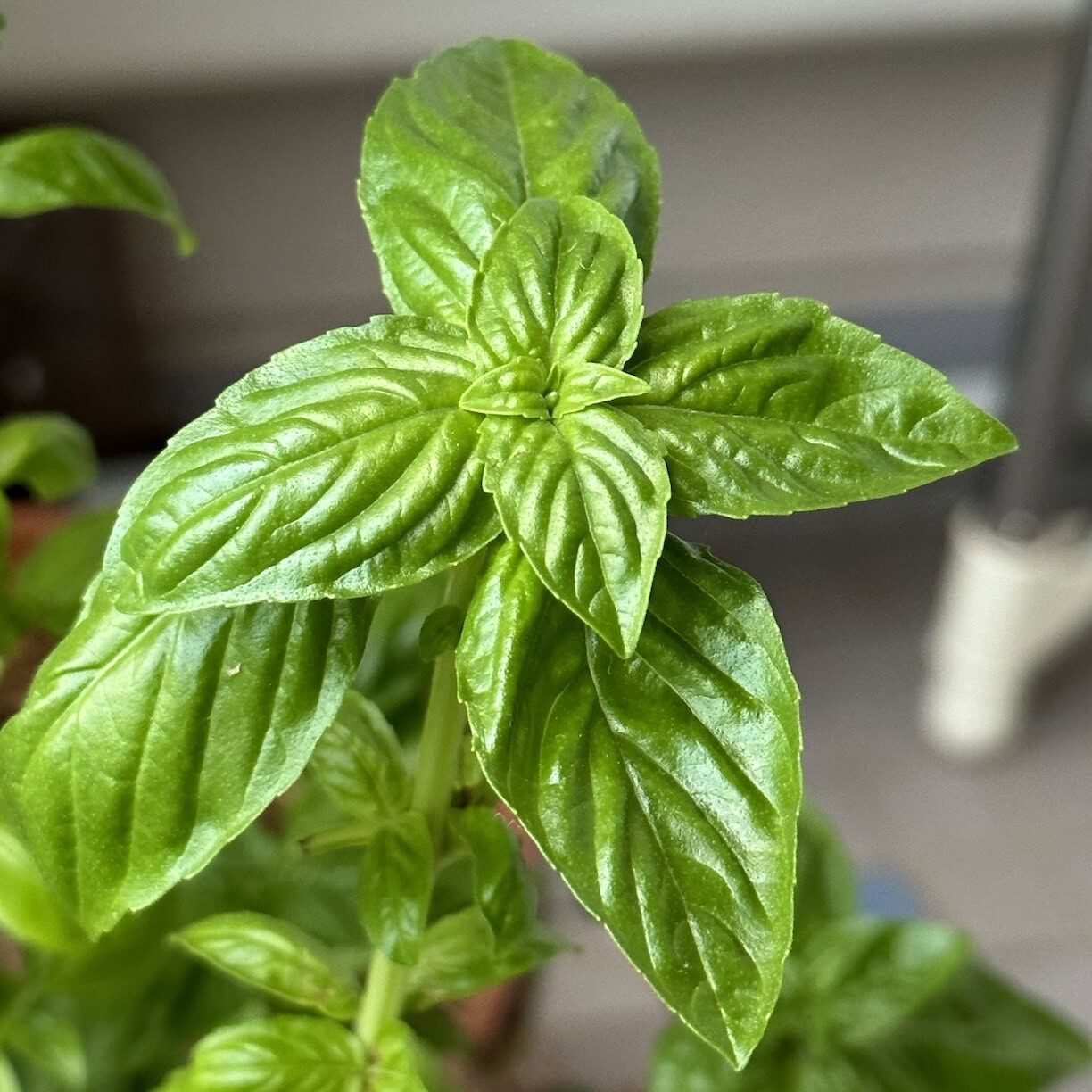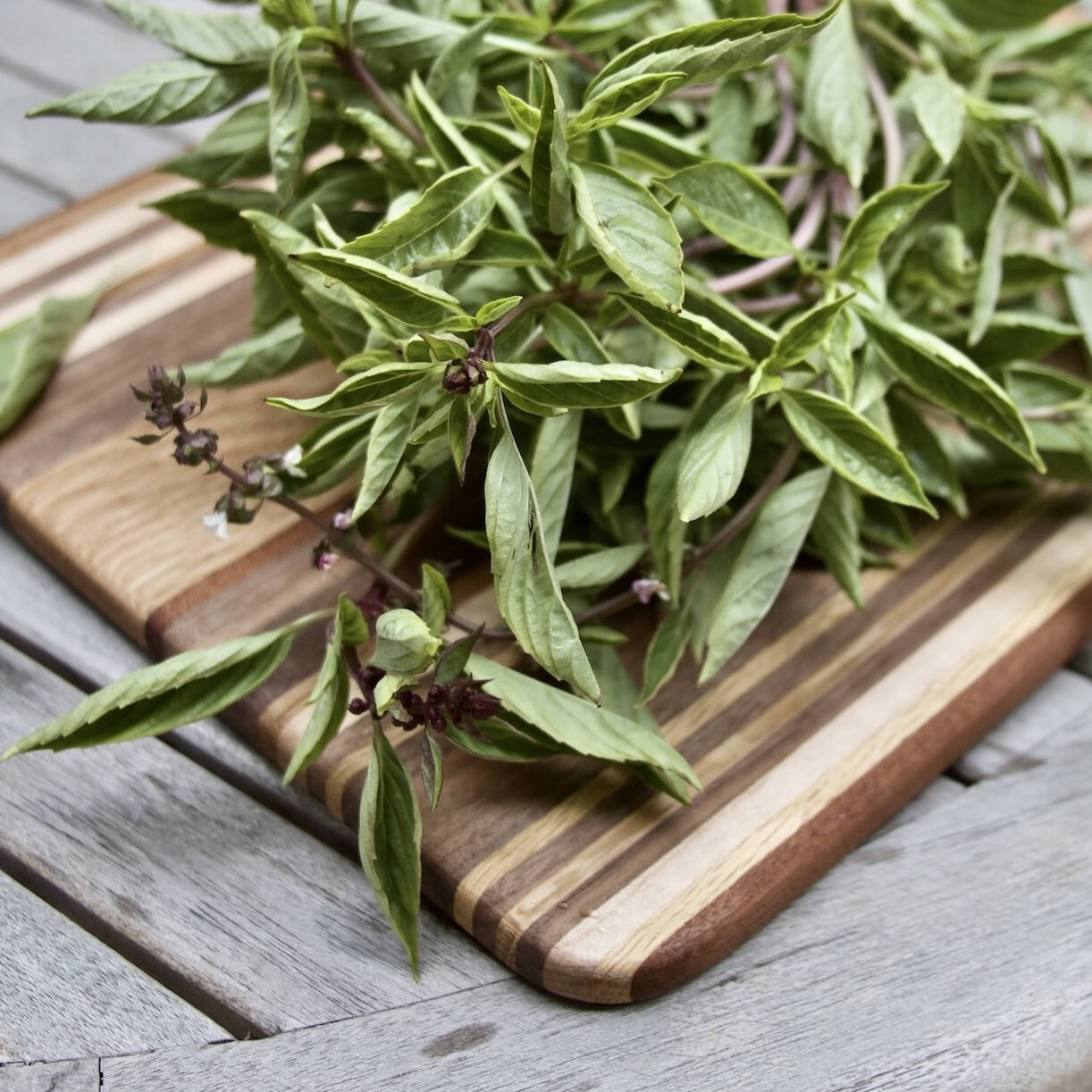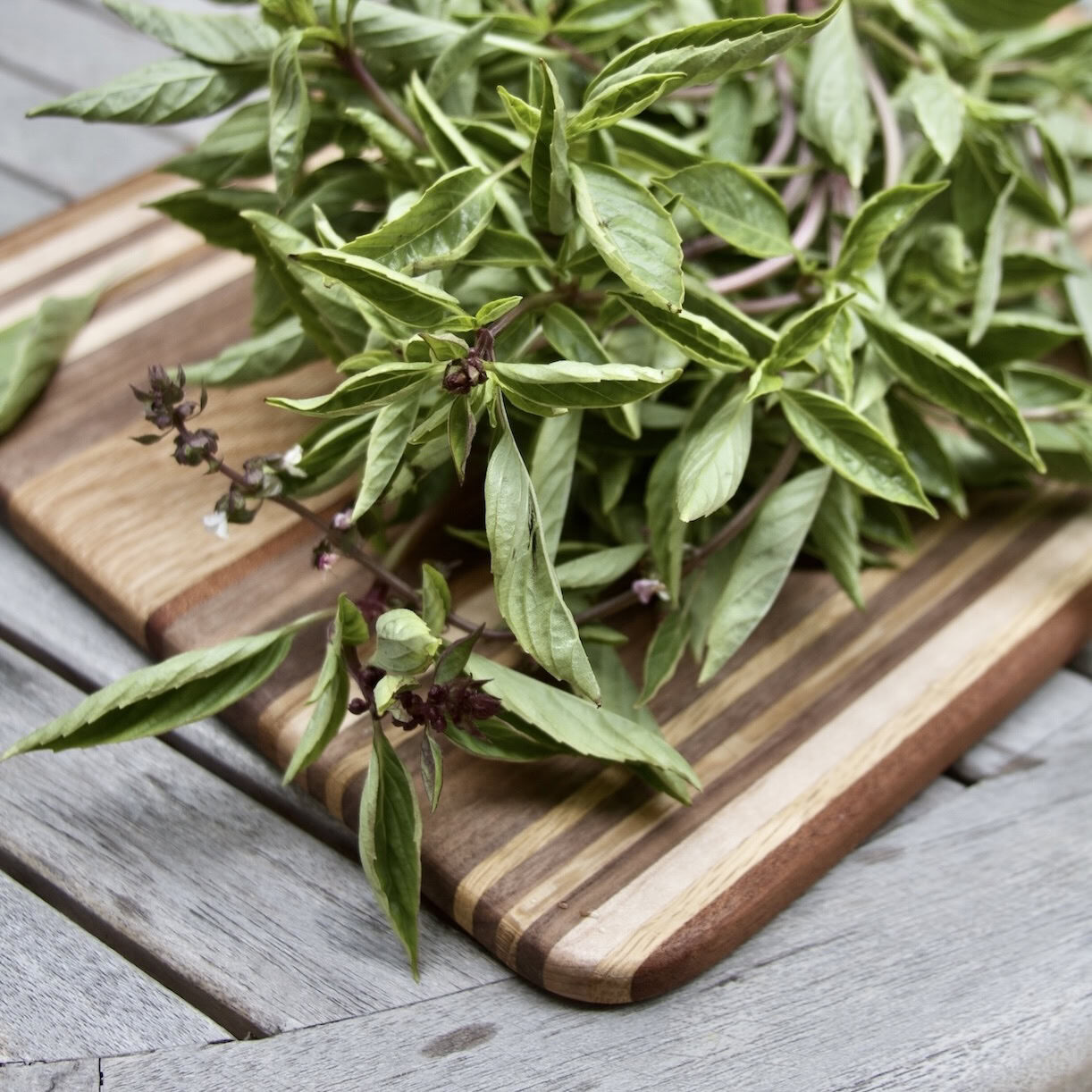Basil
Basil is the herb derived from the leaves and shoots of various species and cultivars in the genus Ocimum, part of the mint family. There are over 60 species and hundreds of cultivars, but the most widely used in cooking are:
Sweet Basil: Ocimum basilicum
Holy Basil / Tulsi: Ocimum tenuiflorum
Lemon Basil: Ocimum × citriodorum
Thai Basil: Ocimum basilicum var. thyrsiflora
Purple Basil: Ocimum basilicum var. purpurascens

REGION OF ORIGIN
Most basil species, including sweet and holy basil, are believed to have originated in the Indian subcontinent and Southeast Asia. Other species are native to tropical Africa.
PART & COLOR
Basil leaves come in a variety of shapes, sizes, and colors depending on the cultivar. The most popular, sweet basil, has vibrant, bright green leaves that are smooth and wide with a slightly pointy tip. Purple basil has deep purple leaves with hints of olive green at the tips and edges. Thai basil is a duller green and is easily identified by its reddish-purple stems. Lemon basil is light green with a yellow tint. Holy basil's leaves can have a purplish hue and they are more spread out.
HARVEST
Basil is typically a warm-season annual that is planted in the spring and is ready for harvest 6-8 weeks after planting. Regular harvesting encourages the plant to continue producing new leaves and delays flowering, and removing any flower buds that appear extends the season. For the best flavor, harvest in the morning after any dew has dried.

FLAVOR & AROMA PROFILE
Basil's aroma is an intoxicating melody of sweet herbaceous notes with a hint of spice. It awakens the senses and stimulates the appetite. The taste of basil is similarly invigorating, regardless of the variety. Sweet basil offers a slightly sweet, peppery taste with a touch of clove and mint. Thai basil has licorice-like undertones. Lemon basil, as you may surmise, brings a bright, citrusy element. Holy basil has elements of all three—the pepper, the clove, the licorice, the citrus—so it often feels more robust than the rest. Perhaps that has contributed to its air of "divinity." Purple basil lacks the pronounced sweetness of other varieties and instead imparts a milder basil essence.
On the palate, soft texture and velvety mouthfeel of basil leaves further enhance the sensory experience. The herb is complete in its fresh form, exuding its coveted bright top notes. Dried basil, while lacking the same fresh vibrancy, still has value for its more concentrated, earthy flavor.
CULINARY USES
In its fresh form, basil is a culinary powerhouse. Its tender leaves are often used as a fragrant garnish or chopped and added to salads, sauces, and soups for a burst of refreshment. They can also be muddled into cocktails or blended into smoothies, and they work really well in light desserts like strawberry basil sorbet. Dried whole leaves are often used to infuse liquids, while dried and ground basil is a key component in essential Mediterranean herb blends like herbes de Provence and Italian seasoning.
Sweet basil is famous in Italian cuisine, the star of pesto, Caprese salad, and countless tomato-based sauces. In Southeast Asian cuisine, Thai basil is critical to stir-fries, curries, and noodle dishes. Lemon basil adds a refreshing twist to salads and soups, but especially grilled fish. In India, holy basil makes a delicious, soothing tea. Whichever variety you choose, and however you decide to use it, feel free to get creative. This beloved herb knows few bounds.



